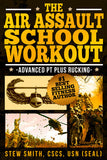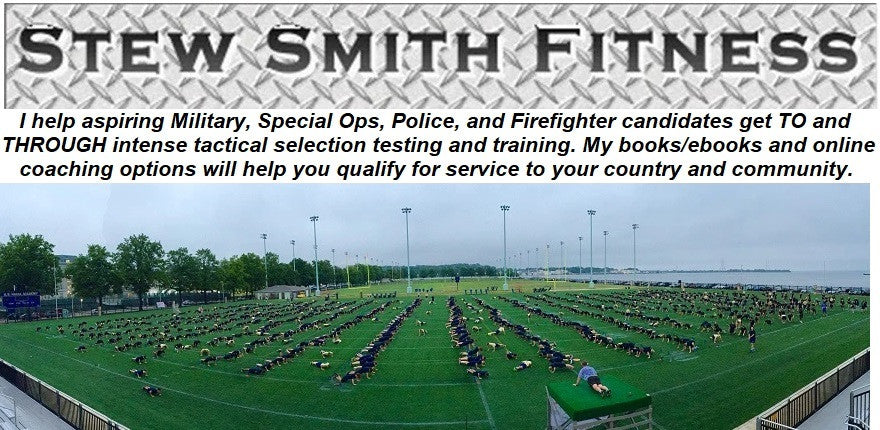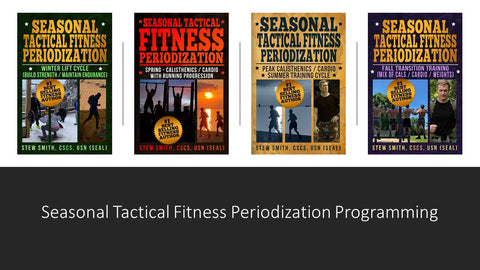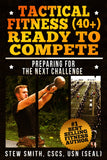Coaching the CSS

The Combat Side Stroke (CSS) has evolved from the side stroke to the modified side stroke. It is still an underwater recovery stroke, which is the Navy Physical Screening Test rule used to screen potential recruits for SEAL, SWCC, EOD/Diver, and Special Amphibious Reconnaissance Corpsman (SARC). The CSS has some more efficient features.
Recently, a swimming coach joined a coaching session with me, teaching about 20 members of the Navy how to learn the stroke. Yes, there is a difference between the CSS and elementary side stroke (see both side by side). Some of the coaching cues and finer points of the CSS are the following to correct as a coach:

Body Position - As with any swim stroke, staying horizontal in the water is the key. Many non-swimming athletes start swimming using this stroke and fail to understand the importance of body position caused by popping their heads up and out of the water to breathe. This stroke requires you to be on your side for most of the stroke, so there is a “top arm” closer to the surface and a “bottom arm” closer to the bottom of the pool.
1 - Turn to breathe with the top arm (don't pop up to breathe) – If you turn to breathe like during the freestyle/crawl stroke vs. pop your head out of the water to breathe, you will fix both the timing of the stroke (Turn with the top arm pull) and the body position issue as the body acts like a see-saw in the water when the head comes out of the water. Acting like a screwdriver and turning to breathe is one of my coaching tips for students. Notice The head turn with the top arm pull.

2 - The top arm looks like a "freestyle catch." – Along with turning the head with the top arm, you need to pull as much water as possible when pulling. This means teaching the “freestyle catch” for the top arm. Many students will pull from the shoulder with a straight arm, creating a multi-directional pull that is less effective than a freestyle catch. Imagine reaching over a barrel in front of your head and bending the elbow, so the forearm is near vertical to start the top arm pull. This pull will engage the back muscles through the pull and then create a push of the triceps at the bottom, making for a powerful, unidirectional stroke.

3 - Breathe during the Bottom Arm Pull – For perfect timing of the CSS, after you turn to breathe with the top arm, start the bottom arm pull and inhale during the pull. Your face is out of the water at this time. Many people make the mistake of not turning with the top arm and are rushed to fit in the bottom arm pull with a turn (or pop-up) of the head and the breath. This bottom arm pull looks more like a "breaststroke scull" than a full arm stroke to your waist.
I use the coaching cues TT and BB: Turn with the Top Arm and Breathe with the Bottom Arm to combine the two arm pulls in proper sequence.

5 - Kick can be either a scissor kick or a breaststroke kick. You can choose either kick, though most people use the scissor kick. NOTE: Most land athletes do better with the scissor kick (CSS), and most swimmers/water polo players do well with a breaststroke kick (CSS). and extra flutter kicks, too. It is personal preference, though once they pass the point of having to take PSTs, they will be doing most of their swims with fins in their military training. Some will recommend constant flutter kicks in between the scissor kick WITHOUT fins. I do not, as most people, especially land athletes, are inefficient with flutter kicking. It will make you faster at first, but maintaining the constant kicks will tire you out on the back end of the 500-yard swim (and the rest of the PST - sit-ups and 1.5-mile run).
There is no rule against adding flutter kicks - however, I have seen it not go well and is not the best universal recommendation for all Spec Ops candidates.
However, with fins flutter kicking is the way to go. You must do something other than a breaststroke kick, like scissor kick, flutter kick, or even dolphin kick). Swimming with fins video. The one thing you want to avoid when swimming with fins is “bicycling” or bending the knees too much. Notice the difference between the two forms of swimming with fins.

6 –Arm Recovery – GLIDE - At the time of the kick, a tight arm recovery needs to occur to put you into a "streamlined glide position" that should last 2-3 seconds, moving at a yard-per-second place. There is a fine line between over-gliding, under-gliding, and perfectly gliding. Check out this correction of overgliding#1 and not over-gliding #2. You cannot miss under-gliding as that is a near-constant stroking process that skips the stroke's 2-3 second glide. If you want a fast swim, you need a powerful kick and a perfect streamlined body position. One of my perfect demonstrations is largely due to a perfectly streamlined position - Here is a perfect CSS to put it all together.
7 - Extra Credit - KICK OFF THE WALL - You do not need to do a "breaststroke pullout," but if you consider adding it to every push off the wall, you will be faster. However, you must get in better shape to handle the longer time underwater at every kick-off of the wall, especially if you are a non-swimming athlete.
Sorry for all the links, but it is nearly impossible to coach the swimming techniques with seeing a moving picture of the skill discussed. Find more videos about learning and coaching the Combat Swimmer Stroke on the following social media pages: Instagram Reels | TikTok | YouTube and YouTube Shorts
There is More To StewSmithFitness.com than You May Know
(In fact, there are more than 40 books, 1000+ articles, online coaching - and more)

Who is Stew Smith CSCS? Coach, Trainer, Writer, Podcaster: I'm the former Navy SEAL that tactical candidates go to for books, ebooks and online coaching to prepare themselves to get to and through intense tactical assessment and selection programs and qualify for service in their chosen tactical profession. See More at StewSmithFitness.com
Where to Find More Information About Optimal Performance Training Programs
When you start training again, consider the seasonal tactical fitness model. I call it A WAY to train and obviously not the only way to train. But it offers the opportunity to never neglect your weaknesses, helps with flexibility and mobility, but will also put you at a level of physical abilities where you are happy with your overall ability to do just about anything. We have a system where the seasons dictate our training. When it is nicer outside, we tend to run and do more calisthenics. When it is colder and not so nice, we lift more, run less, and still maintain our outdoor activities with shorter runs and rucks. Check it out: Seasonal Tactical Fitness Periodization System.
These Seasonal Tactical Fitness BLOCK Periodization programs will walk you through 4 x 4 weeks cycles with 16 weeks of each season in two programs. (32 total weeks)

Increase Strength & Crush the PST / PAST
3 Weeks Strength - 1 Week PT / Cardio Focus
(16 weeks)
These programs will walk you through 4 cycles with 12 weeks of each season in two programs.
The Specific Military / Special Ops Physical Fitness Workouts

Navy SEAL Workout Phase 1
Navy SEAL Workout Phase 2 - 3
Navy SEAL Workout Phase 4 Grinder PT
Navy SWCC Workout
Army / Air Force Advanced Fitness / Special Ops
Army PFT Workout (Prep For Rucking, OPAT, ACFT)
Army Special Forces / Ranger Workout
Army Air Assault School Workout
Army Airborne Workout
Air Force Special Warfare IFT / OFT / Selection Prep







Advanced Running Program - Special Ops Supplement Plan
USMC RECON / MarSOC Workout
USMC OCS / TBS Workout
USMC IST and PFT
The Combat Conditioning Workout
Air Force PJ / CCT Workout Battlefield Airman Prep Course
The UBRR Upper Body Round Robin Workout / Spec Ops version
The Coast Guard Rescue Swimmer / Navy SAR Workout
The Service Academy Workout (West Point, Navy, Air Force Academy)
The Navy, Air Force, Marine Corp Boot Camp Workout
The Law Enforcement Physical Fitness Workouts
The FBI Academy Workout | FBI Workout Vol 2
The DEA Workout
The FLETC Workout - Ace the PEB
The PFT Bible: Pushups, Sit-ups, 1.5 Mile Run
The Fire Fighter Workout - Ace the CPAT
Beginner / Intermediate / Advanced Fitness Guides
The Beginner / Intermediate Guide to Fitness
Reclaim Your Life Erin O'Neill Story (beginner / intermediate)
Veterans Fitness Baby Boomer and a Flat Stomach
Circuit Training 101 Beginner / Intermediate Guide to the Gym
The Busy Executive Workout Routine
The Obstacle Course Workout Prep for Races or Mil, LE, FF
TRX / Military Style Workouts Adding TRX to Military Prep Workouts
Tactical Fitness Over 40 Series
Tactical Fitness (40+) Phase 1, Phase 2, Phase 3, Phase 4
Online Coaching Options
Online PT CLUB - Weekly Workouts created personally for you.
New Member's Only Content / Services Program!
If you want access to years worth of workouts, many of the top eBOOKs, favorite workouts of the week, free fitness APP, closed Facebook Group, video / picture library of exercises, and more access to LIVE Q/A sessions check out the Stew Smith Fitness Members Section.
The dashboard below has the links to all the information, archives, videos, and links to workouts, podcasts, live Q and A lessons.
Consider this! - A Membership Program and Gain Access to Exclusive Content
(click for Fitness Club Dashboard - members only)
Questions? Just email - Stew@StewSmith.com
At StewSmith.com - List of Products and Services
- FREE Articles
- Podcasts and Swimming Videos (Youtube, TikTok, Instagram)
- eBooks
- Books and eBooks in PRINT
- Stew Smith Fitness Club membership site
- Online Coaching
Stew Smith Fitness
Find more about our programs on our social media:
Instagram TikTok Youtube
Stew Smith is a former Navy SEAL and fitness author certified as a Strength and Conditioning Specialist (CSCS) with the National Strength and Conditioning Association. Visit his Fitness store if you're looking to start a workout program to get you TO and THROUGH any tactical fitness training program OR create a healthy lifestyle. Send your fitness questions to stew@stewsmith.com.






























